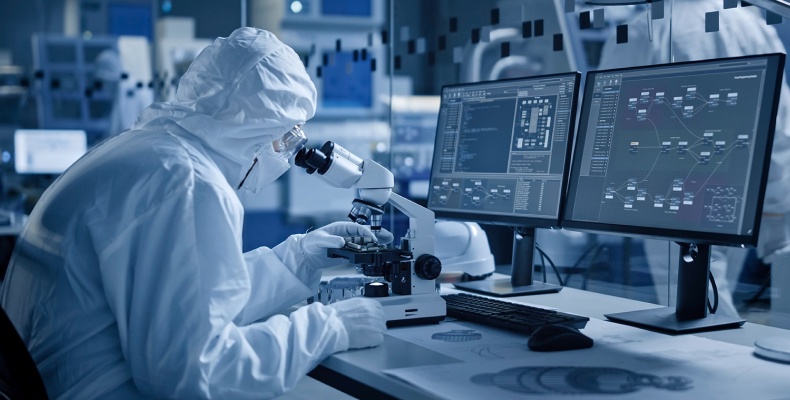In the data-driven world of today, laboratories are essential to many sectors of the economy, including pharmaceuticals, healthcare, agricultural production, and environmental monitoring. Organizations are using Laboratory Information Management Systems (LIMS) more frequently in order to maintain high standards of quality, efficiency, and accuracy in laboratory operations. LIMS integration has emerged as a powerful tool for optimizing data accuracy and efficiency, making it an essential component of modern laboratory management.
The LIMS Advantage
Laboratory Information Management Systems, or LIMS, are software solutions designed to streamline and manage laboratory workflows, data, and samples. They offer a centralized platform where laboratory personnel can record, access, and analyze data, ensuring that it remains accurate, secure, and compliant with regulatory standards. However, the true power of LIMS is unleashed when it is seamlessly integrated into the existing laboratory ecosystem. Many leading laboratories, such as those in the pharmaceutical industry, have turned to LIMS integration, with companies like Implen offering innovative solutions to enhance data accuracy and efficiency.
Seamless Data Flow
One of the primary benefits of LIMS integration is the establishment of a seamless data flow throughout the laboratory. Traditionally, laboratories relied on manual data entry, which was not only time-consuming but also prone to errors. With LIMS integration, data can be automatically collected from various instruments, eliminating the need for manual entry. This guarantees that data is promptly available for analysis and lowers the possibility of transcribing errors.
Enhanced Efficiency
In any scientific setting, efficiency is vital. LIMS integration enhances efficiency by automating many labor-intensive tasks. For example, sample tracking and inventory management can be automated, allowing laboratory staff to focus on more critical tasks. Additionally, LIMS integration can optimize sample workflows, ensuring that samples are processed in the most efficient order, reducing turnaround times, and increasing overall productivity.
Improved Data Accuracy
Data accuracy is paramount in laboratory operations, especially in industries like healthcare and pharmaceuticals, where patient safety and regulatory compliance are at stake. LIMS integration significantly improves data accuracy by reducing the risk of human errors. When data is automatically captured from instruments and integrated into the LIMS, there are fewer opportunities for mistakes, such as typographical errors or mislabeling of samples. This leads to more reliable and trustworthy results.
Data Security And Compliance
LIMS integration also addresses data security and compliance concerns. By centralizing data within a secure LIMS system, organizations can implement robust access controls and encryption measures to protect sensitive information. Moreover, LIMS integration enables laboratories to maintain compliance with industry-specific regulations and standards, such as Good Laboratory Practices (GLP) or Good Manufacturing Practices (GMP). This not only reduces the risk of compliance violations but also enhances the overall quality of laboratory operations.
Real-Time Monitoring And Reporting
In a rapidly evolving environment, real-time data monitoring and reporting are essential. LIMS integration provides real-time visibility into laboratory operations. Researchers, managers, and stakeholders can access up-to-the-minute data and reports, enabling informed decision-making. This real-time monitoring capability is particularly valuable in scenarios where immediate action is required, such as identifying and addressing anomalies in experimental results.
Scalability And Flexibility
Laboratories often need to adapt to changing research requirements and evolving technology. LIMS integration offers scalability and flexibility to accommodate these changes. New instruments and equipment can be seamlessly integrated into the existing LIMS infrastructure, ensuring that data management remains consistent and efficient. This adaptability allows laboratories to stay at the forefront of innovation without sacrificing data accuracy or efficiency.
Enhancing Collaboration
Collaboration is vital in many laboratory settings, especially in multi-disciplinary research environments. LIMS integration facilitates collaboration by providing a centralized platform where researchers can access and share data securely. This collaborative environment fosters better communication among team members, accelerates data-driven discoveries, and promotes a culture of innovation.
Conclusion
In conclusion, LIMS integration is a game-changer for laboratories seeking to maximize data accuracy and efficiency. By automating data collection, enhancing data accuracy, ensuring compliance, and promoting collaboration, LIMS integration transforms laboratory operations. It gives enterprises the confidence to confidently push scientific discoveries, minimize errors, and make well-informed judgments. In an era where data accuracy and efficiency are paramount, LIMS integration is not just a tool; it's a necessity for laboratories aiming to excel in their respective fields. Embracing LIMS integration is a step towards a future where laboratory operations are not only more efficient but also more reliable and impactful.


No comments yet